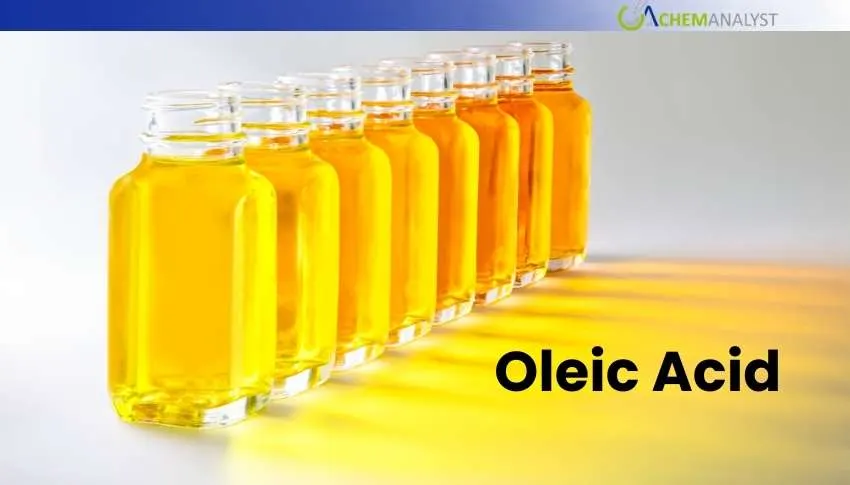Welcome To ChemAnalyst

The oleic acid market is showing strong resilience, with prices steadily rising in July 2025 after a sharp decline. This rebound is driven by a strong global demand, particularly from the biodiesel, cosmetics, and pharmaceutical industries. Supply is constrained by weather issues in Southeast Asia and government programs like Indonesia’s B40 biodiesel initiative, which have tightened the market. Additionally, logistical issues and increased export duties are contributing to rising costs.
The oleic acid market is seen to be very resilient because prices are stabilized but they have been steadily rising since July 2025, indicating a strong turnaround after the steep decline witnessed in June. The stabilization of this price depicts the improving demand of environmentally friendly industrial feedstocks globally and the relevance of oleic acid to biodiesel manufacturing processes making the market to hold future optimistic developments by 2025 August.
Oleic acid is a bedrock component of various industries including cosmetics, pharmaceutical and manufacturing of biodiesel. The existing market conditions reflect that the price of oleic acid has been strong in major production zones. Month-on-month Malaysian palm oil output topped approximately 8 percent in July, but oleic acid prices remained under an upward trend due to continuous growth of demand which did not match the growth in supply. Prolonged precipitation in sumatra and Kalimantan made Indonesian oleic acid manufacturers limited in its production as it made harvesting of palm fruits littered and slowed the extraction speed in the processing plants.
The rebound of prices is due to several factors that have occurred at the same time. The B40 biodiesel program in Indonesia has been soaking up large amounts of crude palm oil in the country putting stress on the supply of oleic acid raw material. Malaysia increased its reference price of crude palm oil in August, which has activated a 9% export duty, and this has a direct influence on the cost of oleic acid production. Disturbance in weather in the Southeast Asia region due to impact of El Nino had lowered production of the fresh fruit bunch and had brought cost pressures upstream.
Producers of personal care in India and Vietnam increased purchases of oleic acid as soap and lotion raw materials. Food manufacturers went on stocks in fear that their product would be raised in price and the pharmaceutical players took up spot purchases. The cosmetics industry is specially contributing to this demand because companies insist on using natural oleic derivatives acid to ensure high-quality sources as the components of their new products.
Pricing pressures are augmented by logistical pressures. Rates on Southeast Asia to principal markets increased sharply on shortage of vessels and rise in fuel prices. The congestion of the Malaysian export terminals generated delays in delivery resulting in buyers having to pay premiums in getting instant oleic acid availability. Spot markets were made tighter due to container shortages in the transportation of specialized oleic acid.
Demand trends of regions reveal that India and China are in the forefront in importing oleic acids before festivals accompanied by middle eastern refiners increasing their imports of the same to use in down-stream petrochemical applications. Imports of US and EU were weakened by regulatory concern and tariff installations but demand around the globe was sufficiently strong to aid recovery in price.
As per ChemAnalyst, the exporters and importers are advised to examine the sourcing strategies right away, analyzing alternative channels in supply as well as different methods in handling the inventory.
We use cookies to deliver the best possible experience on our website. To learn more, visit our Privacy Policy. By continuing to use this site or by closing this box, you consent to our use of cookies. More info.
